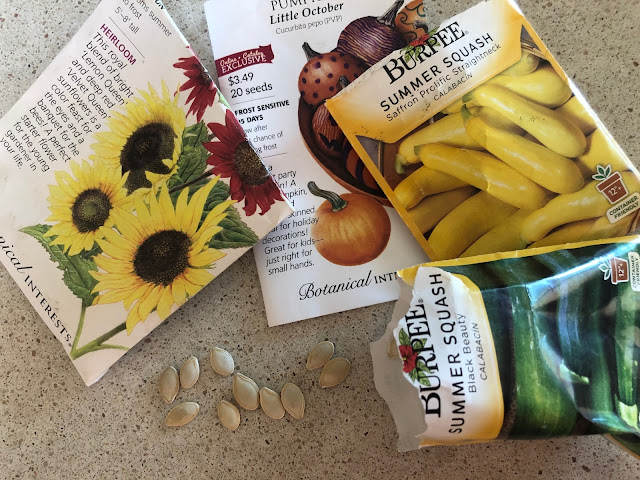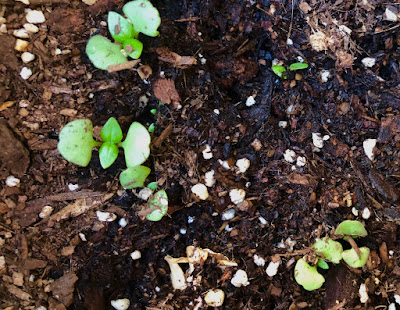
|
|
Squash, pumpkins and sunflowers, along with melons, cucumbers and beans, all can still be planted from seed for harvest later this summer. Corn and radishes, too. The little pumpkins can be trained on a trellis, just like cucumbers or small melons. (Photos: Kathy Morrison)
|
Is it too late to plant a vegetable garden?
Memorial Day marks the unofficial start of summer. With triple-digit temperatures, this holiday definitely feels more like mid-July or August than the beginning of our warmest season.
For procrastinating gardeners, the clock is ticking for the best performance and highest yields from tomatoes, peppers and other favorites. But there’s still time to plant a veggie garden in Sacramento – just wait until the high temperature cool back down in a day or two.
Heat-loving tomatoes, peppers, eggplant and tomatillos can be transplanted now and will grow rapidly in the weeks to come.
For a “late” start, choose seedlings of early-maturing varieties. Early Girl, Celebrity and Juliet will all produce mature tomatoes in about 60 days or less – that’s early August. Just about any cherry tomato will produce a plentiful late-summer crop.
Plant tomato seedlings deep, stripping off the side leaves, so they can still develop enough roots to support the plant as well as suck up water and nutrients. Avoid transplants that are already setting fruit.
Squash, pumpkins, melons and cucumbers can be planted by transplant or seed. It’s still early enough to plant these crops by seed; they’ll develop stronger roots and more drought tolerance.
Create mounds with a mixture of aged compost and soil. Leave plenty of space between hills; even bush varieties of these crops tend to get big. The more air circulation, the less chance of powdery mildew or other fungal disease. Vining varieties need room to sprawl, but their foliage will shade the soil – saving water.
Short on space? Cucumbers and smaller melon varieties can be trained on trellises. Use old pantyhose (remember those?) or other stretchy material to support the maturing fruit.
Corn, radishes and beans can be planted now, directly from seed. Plant corn and bush beans in blocks (such as 6 by 6 or 12 by 12) instead of long rows. A square foot fits nine corn or bean plants, spaced 6 inches apart. This method improves pollination and water use.
Planted now, vining beans will quickly cover a trellis, another space-saving advantage. Heat-loving scarlet runner beans offer eye-catching flowers as well as tasty purple beans.
Radishes rank as the fastest-growing late spring crop. Planted now, they’ll be ready to pick by mid July – or sooner.

|
|
Get some basil sprouting now to go along with
tomatoes.
|
Don’t forget basil. Planted from seed or transplant now, basil will be ready in time for those first tomatoes.
Add some shade and a bee favorite with sunflowers. Planted now, tall varieties will offer shade in August when peppers and tomatoes appreciate a break.

